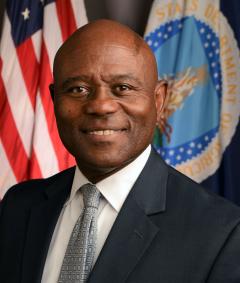Juneteenth: Remembering our shared history, leaning into our unfinished future

On June 19, 1865, General Gordon Granger stepped into Galveston, Texas, with a proclamation that all slaves in Texas were now free. Texas was the last Confederate state to have slaves, and Juneteenth marks the last state abolishing slavery. This came roughly two-and-a-half years after Lincoln’s Emancipation Proclamation. Some historians argue that the messenger of the Emancipation Proclamation was murdered on the way to Texas, and that is why freedom occurred so much later. What we do know for sure: many slaves were moved to Texas by slave owners who believed that Texas was too far for union troops to reach. Thankfully, they were wrong.
While it is a historical fact that General Gordon Granger delivered the proclamation to Texas, he could not give humanity to those who already had it, even if that wasn’t true in everyone’s eyes. Scholars believe that more than 10 million humans were victims of the transatlantic slave trade, and many of their stories of resilience, shared struggle and communities forged in adversity have been lost to the history books, but not to their descendants. These stories were passed down through generations as stories told at Juneteenth celebrations and beyond.
The jubilation felt by newly freed slaves must have been electric, and it is this power that is at the heart of Juneteenth. Parades and festivals popped up all around the country after 1865 to mark the overcoming of slavery. As slaves left the plantations, the tradition of celebrating Juneteenth went with them all across the nation. Specific foods like strawberry soda, red velvet cake and watermelon became connected with Juneteenth because it was forbidden to consume as slaves. Now they are used in celebration. Others would argue that the red tints of various foods were used to remember the shed blood of slaves. Regardless, many of these foods are still traditional foods eaten at Juneteenth celebrations in 2021.
Today, on a farm not too far from Galveston, crops are being grown, but machines are doing much of the work that in past centuries was done by people. The question that hangs in the air and in the land is: How much further have we as a nation come since June 19, 1865? Historical landmarks are scattered around Galveston celebrating the events that occurred in 1865, but we know that even after the 13th Amendment was ratified in December 1865, African Americans did not have equal rights.
Landmarks and marking an event are one thing, but instilling the values of freedom, equality and shared humanity into our daily rhythms are more difficult. The Forest Service contextualizes interdependence as “people and nature; communities and colleagues; the past, present, and future.” To fully reflect on our values and Juneteenth, we need to see how America’s past is interdependent with its present and how our present will be interdependent with our future. Only then can we, as Amanda Gorman said, see “a nation as not broken, but unfinished.”
To embrace our value of interdependence is to continue to fight for equal treatment for by remembering our past shared history and leaning into our unfinished future. In a year that has been marked by marches for equality and civil rights, can we as an agency still celebrate the resilience, joy and hope found within Juneteenth?
Today, President Biden signed into law a bill making Juneteenth a federal holiday. This is the first additional federal Holiday since MLK day in 1983. Federal employees will observe Juneteenth on Friday, June 18.
